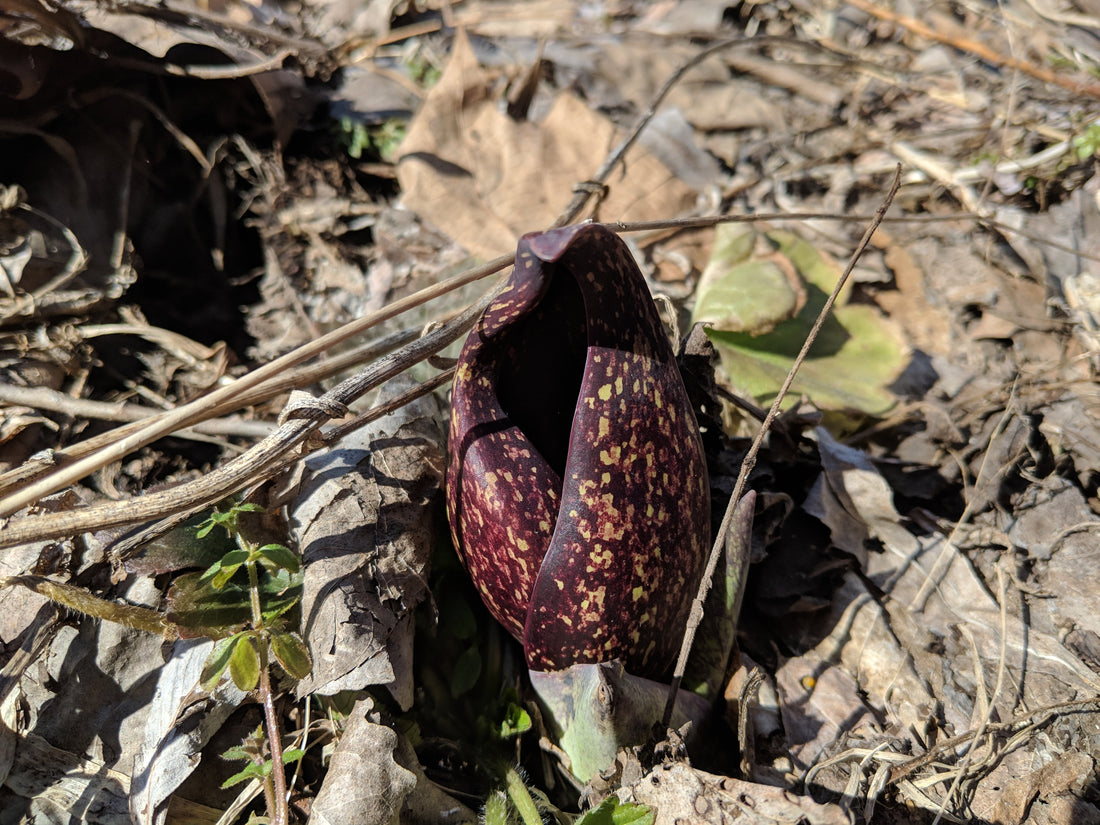Skunk Cabbage
(Symplocarpus foetidus, Araceae)
I am writing this in anticipation of walking through the woods and seeing the maroon cylindrical spathes of North America’s native Skunk Cabbage shooting up through the snow. Skunk Cabbage is one of the very first plants to emerge from winter dormancy, coming to us weeks before most other plants are even beginning to stir. It is able to do this because of a curious mechanism: thermogenesis! Skunk cabbage generates heat via cyanide resistant cellular respiration - it is one of very few plants that can do this. The spadix (a spike borne on a fleshy stem) is the part of the plant responsible for this adaptation. It is sheathed in a spathe, which covers the spadix and traps in the heat, which allows the flower to develop weeks earlier than it otherwise would be able to. The inner chamber of a Skunk Cabbage plant during this early period of growth can be 20 degrees warmer than the surrounding environment.
Species name: Foetidus. What does this mean? Foul smelling! And indeed, the early blooming flowers are just that. The odor (& warm flower) simultaneously draw in pollinators and deter pests. You can find this smelly, late winter bloomer up and down the east coast of North America from Nova Scotia to the Carolinas and westward to the Great Plains. More specifically, in marshy deciduous woods of eastern and northern forests. If you are walking through the woods over the next couple of weeks and hope to spot a Skunk Cabbage colony, look along stream edges, near boggy places, and typically wet areas.
Skunk Cabbage has documented uses for many Native American tribes, including but not limited to the Abnaki, Chippewa, Delaware, Haudenosaunee, Malecite, Menominee, Meskwaki, Micmac, Mohegan and Nanticoke. I found this list through the Cornell Botanical Garden’s website and I would guess that there are many more tribes that work with this native plant.
Medicine: First a disclaimer, I have not worked with this medicine. But from what I have read, it is a low dose herb with an acrid taste. Foragers take note that this is not a spring leaf you’d want to eat - it is so rich in calcium oxalate that it irritates the mouth and throat and is considered toxic for humans. Medicine makers would harvest the root, dry it, and use that for tincture or medicinal tisane. Apparently the root smells as fetid as the flower. Again, LOW dose, meaning the tincture dosage would be around 3 drops and one cup of tea would contain 1 teaspoon of the dried root. It is typically employed as antispasmodic, sedative, diaphoretic, or expectorant and employed primarily in cases of bronchitis and asthma. Overdose may cause nausea and vomiting. I don’t personally know anyone who works with this herb because of the abundance of other herbs that have similar properties but a wider therapeutic margin. One of my herbal philosophies is to always use the most gentle herb possible for the situation. I would not consider Skunk Cabbage a gentle herb, but it is one I am glad to know about. Do you have personal experience working with Skunk Cabbage? Write in!

